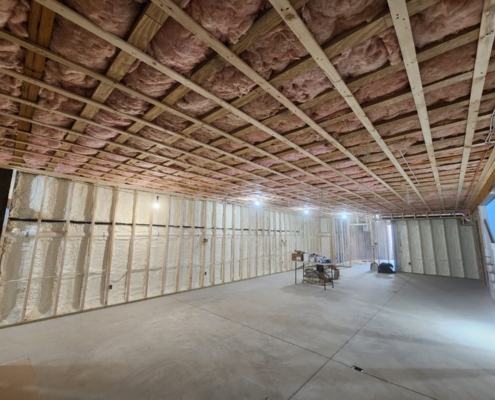How to Choose Insulation for New England Winters
The New England winter is fast approaching. If it’s a struggle and expensive keeping your home warm every winter, you may need to update or upgrade the insulation. There are many types of insulation available and it can be confusing to choose the right insulation for your home and budget. When choosing insulation, other factors to consider include, project size, skill level, safety and quality of work.
A good place to start is determining where insulation is needed most and where it can have the greatest impact. The second step is understanding the R-values for the different areas you plan to insulate. R-values (Resistance to heat loss) are the recommended insulation levels by the Department of Energy for homes in different climates.
DIY Installation versus Insulation Professionals
With certain types of insulation and where you plan to add it, installing insulation yourself is doable. The easiest and most common places for a DIY insulation project are unfinished basements and attics.
When to call insulation professionals:
- The space you want to insulate is not open or accessible
- The type of insulation you want to use that meets the recommended R-value is not batts or rolls
- You encounter issues like dampness, mold, mice nests, and wiring, which can be a fire hazard
- The area you want to insulate lacks proper ventilation
- Your home was built before 1975 and the presence of asbestos is possible
Why an insulation professional is a better choice:
- Safety first: Professionals have the knowledge and expertise to handle and install insulation in all kinds of situations, from cramped crawl spaces to high vaulted ceilings. Trust them to navigate the difficult-to-access areas and avoid an unscheduled trip to the emergency room.
- Right tools: Installing insulation may require tools that even the DIY handyman may not have. Using what you have may not be sufficient to getting the job done. Buying or renting the right tools may defeat the cost-saving purpose of DIY.
- Done right the first time: Professionally installed insulation ensures your safety and having the job completed correctly the fist time.
Greenstamp provides multiple types of insulation. Our building envelope experts can find out where your home is losing heat in the winters and recommend the effective insulation solutions. Greenstamp professionals will work with you every step of the insulation process, from examining problem areas to material selection to completed installation. Contact us today.













